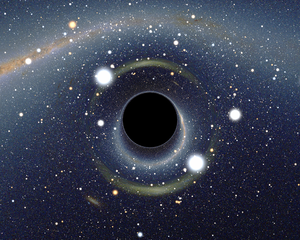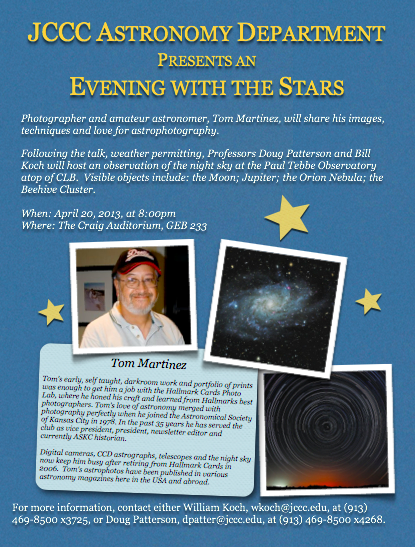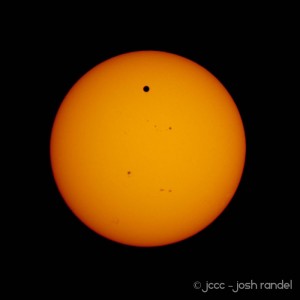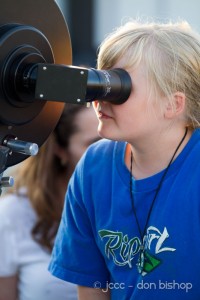JCCC ASTRONOMY DEPARTMENT PRESENTS
EVENING WITH THE STARS
“Year of the Dwarf Planets”
Saturday, April 25th, 8:00 pm
Craig Auditorium – GEB 233
This year, the two largest Sun-orbiting bodies outside of the eight major planets, will be visited for the first time by our robotic explorers. The DAWN spacecraft is moving into its final orbit around Ceres, the largest asteroid, and the New Horizons spacecraft will arrive at Pluto, the first known Kuiper Belt Object, this summer. Both spacecraft have sent back images and data on their targets and we will look at the new discoveries made by these two missions and how they’ve changed how we view small bodies in our Solar System.
Following the presentation, and provided the skies are clear, we will go to the Paul Tebbe Observatory on the roof of the Classroom and Laboratory Building (CLB) to view the night sky through a variety of telescopes. Some of the visible objects we will be able to observe are:
- The Moon
- Jupiter
- The Orion Nebula
- The Pleiades
- M3 Globular Cluster
For more information about Evening with the Stars or our astronomy program at JCCC, please contact one of our astronomers:
- Doug Patterson: [email protected], 913-469-8500 x4268
- Bill Koch: [email protected], 9130469-8500 x3725








